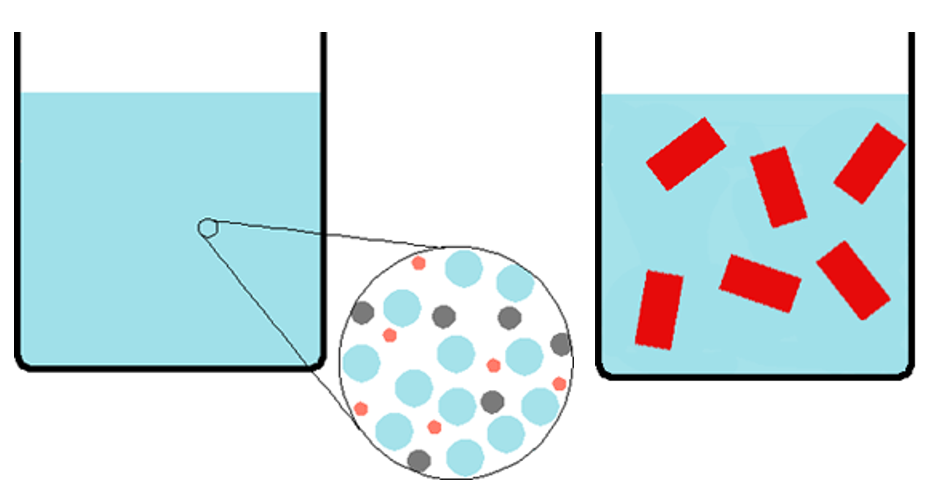When we think about a mixture of species we can either have a homogeneous or heterogeneous mixture. In a heterogeneous mixture, it is clear to see that there are more than one species within the container, however, this is not so clear when we have a homogeneous solution. In the left picture below it is unclear that there are multiple species in the solution, however, in the right picture we can clearly see that there are more than one species within the container.

The relative amount of a given solution component is known as its concentration. Often – though not always – a solution contains one component that is present in significantly greater amounts than all other components. This component is called the solvent and may be viewed as the medium in which the other components are dispersed, or dissolved.
A solution in which water is the solvent is called an aqueous solution. In a typical aqueous solution (saline solution used for medical intravenous delivery), sodium chloride (NaCl) is present at 0.9 g of salt per liter (1000g) of water. By mass, there is more than 1000x the amount of water (our solvent) present in this mixture than salt. By number of molecules (or moles), there are over 3500x more water molecules than sodium atoms.
A solute is a component of a solution that is typically present at a much lower concentration than the solvent. Solute concentrations are often described with qualitative terms such as dilute (of relatively low concentration) and concentrated (of relatively high concentration).